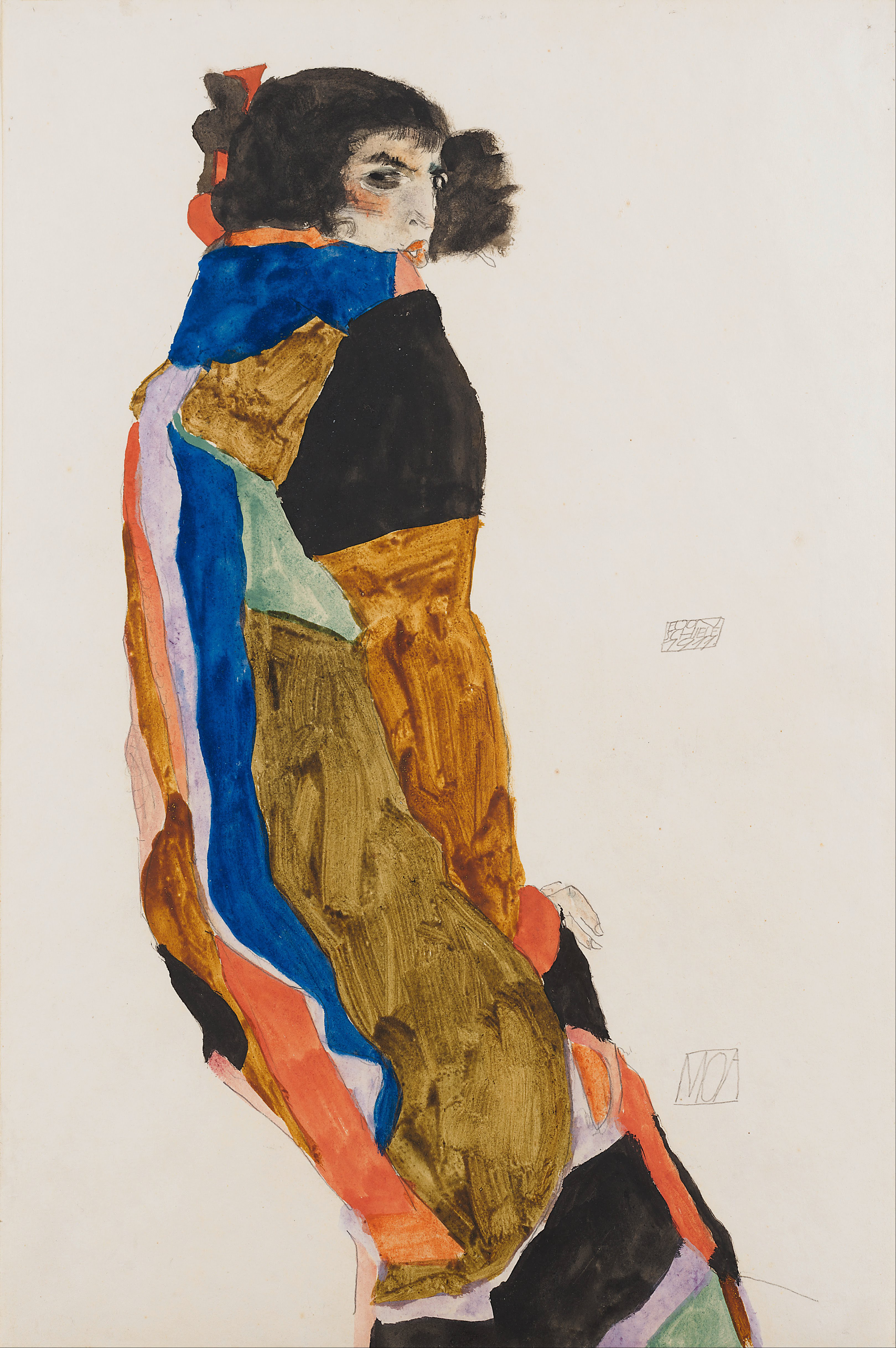In the oeuvre of Egon Schiele, two elements of great significance are pose and motion. In Schiele’s early depictions of his closest friends, such as the dancer Moa, or in the highly original and individual poses for the camera thought up by his friend Anton Josef Trèka, Schiele’s enthusiasm for transforming the human body into a comprehensive work of art can be clearly felt. The depictions of Moa provide a unique look at Egon Schiele’s milieu and the bohemian circles in Vienna during that period. Moa herself was an icon of turn-of-the-century Viennese culture, and she served as Schiele’s model for numerous portraits. With her life partner Erwin Osen, an actor and one of Egon Schiele’s close friends, she shared a fascination with forms of bodily expression as well as with the extreme distortion of facial expressions and gestures. In his art, Schiele was to further heighten this form of pantomime, transferring it to the level of emotional life and sentiment. This image of Moa numbers among the most painterly portraits of the dancer and is also one of those which are most perfect in terms of composition and the use of colour.




Moa
pencil, watercolor and opaque color on paper • 31.5 x 47.8 cm
 Egon Schiele
Egon Schiele